Tracing The Evolution of Television’s Electronic Graphics Systems in the U.S.
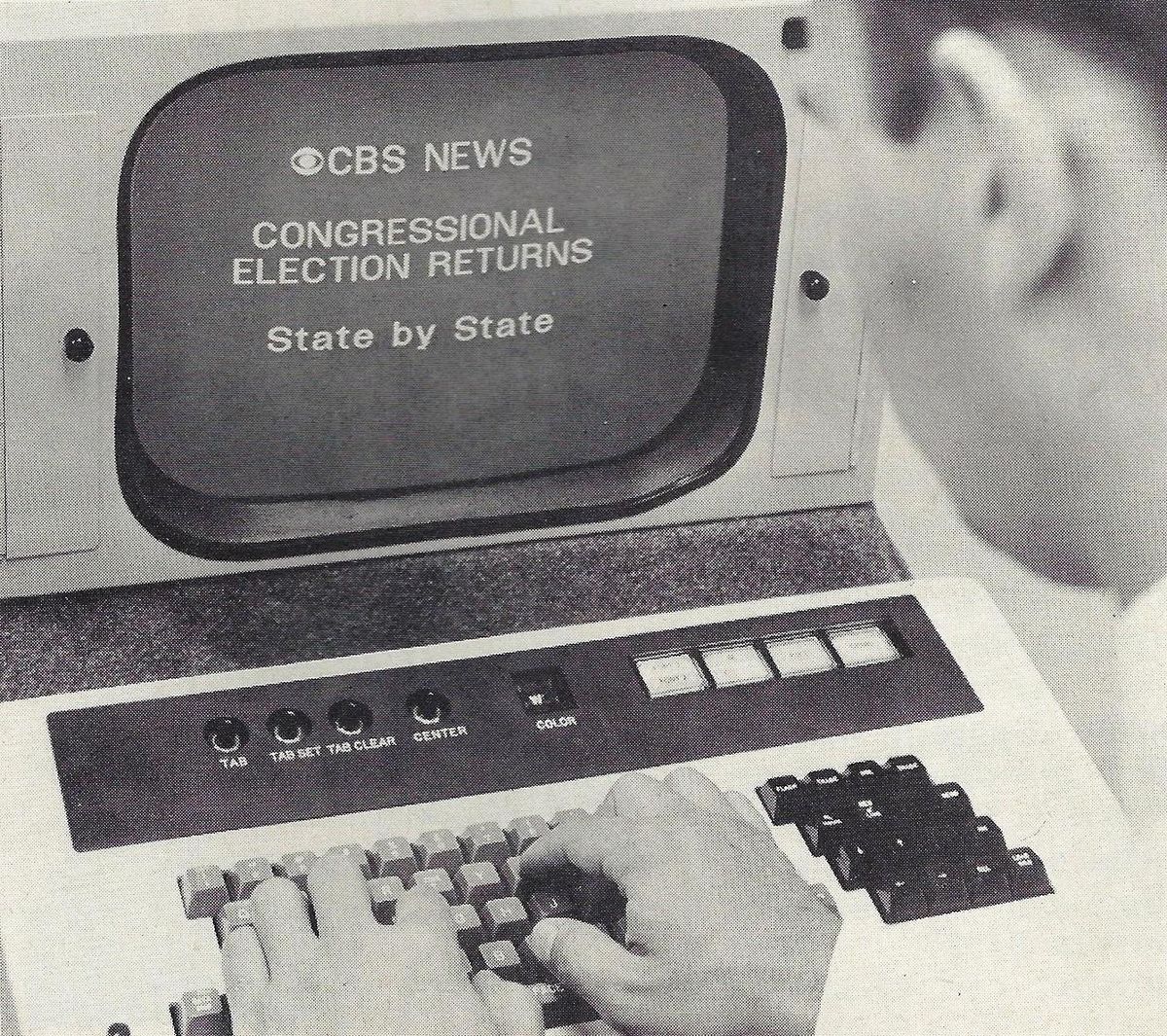
Perhaps a few of us still remember what it was like in ye olde days in putting “lower thirds” rolls on the air. First, a physical page with the desired lettering was prepared by either an artist who was good at lettering or (more likely) by using “press-on” letters. This artwork was then placed on a copy stand and photographed with a film camera. After development, the film was cut into frames and mounted as 35-mm “slides.” These were then loaded into a telecine slide projector for airing.
Preparing and keeping track of even a few lower-third slides was an onerous task, and could grow to gargantuan proportions during live sports broadcasts or, in particular, major political conventions, where literally hundreds or thousands of i.d. slides had to be prepared and kept at the ready. A faster/better technology was obviously needed.
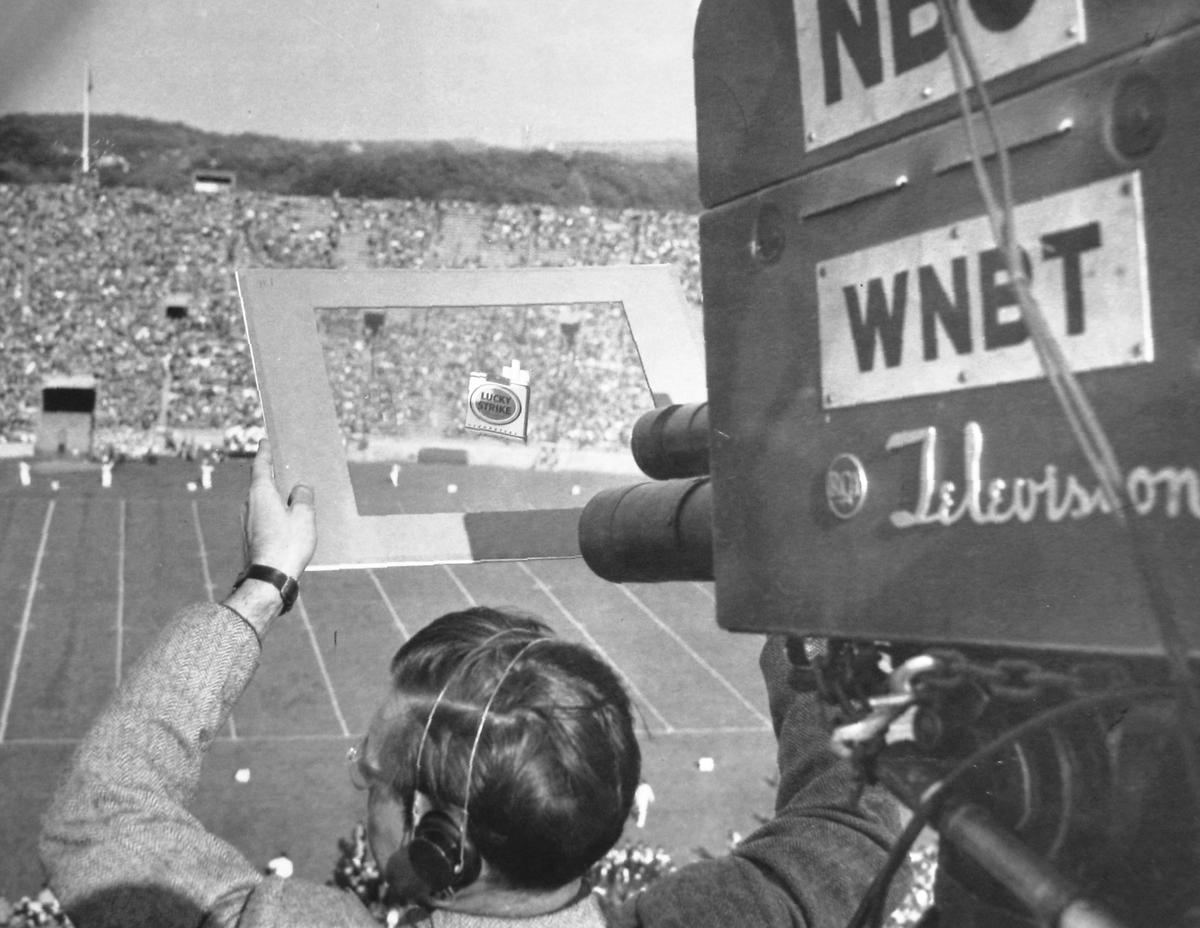
Some TV ECG Pre-History
The quest for a convenient means for electronically generating alphabet fonts and numbers goes back at least to the early 1950s, with the nascent computer companies seeking a more convenient machine-to-human data interface than a “Teletype” printout. This early work generally involved CRTs and was an offspring of “Lissajous” oscilloscope displays. (“I’s” and “O’s,” along with “8s” and forward and backward “slashes” were easy to create with such analog technology, but other characters were not so simple.)
The first really “practical” electronic character generation or ECG scheme involved an adaptation of the “monoscope” tube invented in the 1930s and sold by RCA for generating the familiar “Indian head” test pattern. The monoscope resembles a small CRT, with its phosphor screen replaced by an aluminum “signal” plate with the image to be telecast printed on it. The tube’s electron gun scans the plate, and the difference in secondary electron emissions between the plate and carbon-based ink used in printing the pattern provides a video representation of that image.
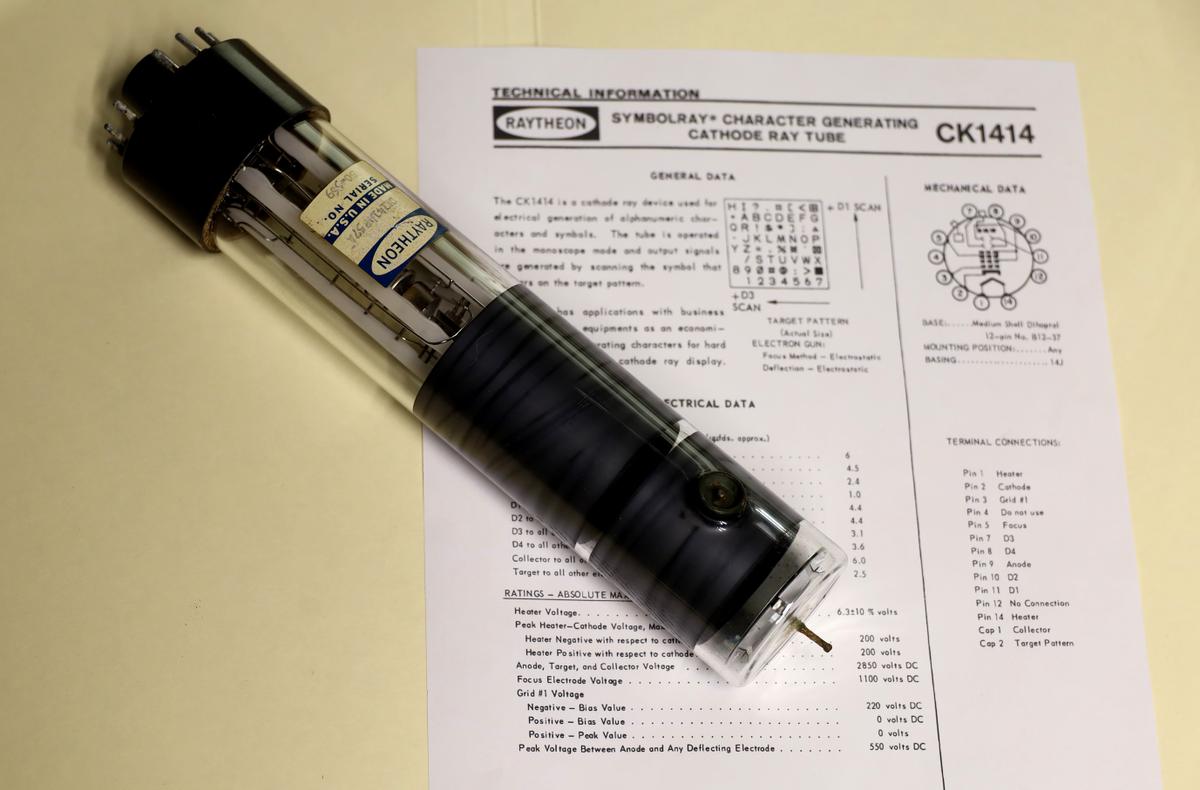
The “character generator” version of the monoscope replaced the TV test chart with an alphanumeric pattern. In use, the scanning beam is reduced to the size of a single character and directed to scan only the desired letter or number. The resulting signal could then be displayed on a cathode ray tube. To create a line of text requires quite a bit of “skipping” back and forth by the electron beam, and blanking while it moves between characters, creating a lot of “flicker” in the displayed characters.

This could be ameliorated to some extent by using a long persistence phosphor in the display CRT, and as such was acceptable for use in computer and airport terminal information displays, but was impractical for use in broadcast television. (The AB Dick Company, an office equipment manufacturer, was one developer of such a monoscope-based ECG system, and that company would later play a big role in the development of an ECG for television applications.)
While computer companies and transportation terminals began to shift to electronic data displays, broadcasters seemed destined to remain with the tried-and-true (but very labor-intensive) 35mm slide technology throughout the 1950s and beyond. Things began to change, however, with the emergence of digital technology in the 1960s.
A New Era in Television Begins
Credit for development of the first “true” electronic character generator goes to what is now an almost-forgotten name in the broadcast industry, CBS Laboratories, an offshoot of the CBS network. And despite that company’s close ties to its parent network and a reputation for innovative broadcast technology, this first such ECG was apparently slated for military computer applications.
Announced in mid-1960, this new device was part of the company’s “VIDIAC” (Visual Information Display And Control) system for CRT display of computer data. Although no name was assigned to this ECG component, it was a fully-functional device, providing a complete uppercase alphabet and numbers, along with punctuation marks and special characters such as #, !, $, and % solely by electronic means (no scanning of pre-printed physical lettersets like the earlier monoscope technology).
As high-density digital read-only memory chips had yet to be developed, magnetic core memory was used for storing the character set, with information retrieved used to turn the CRT beam on and off at designated portions of scanning lines in order to form characters. To provide a more finished look to the resulting displays, CRT beam “spot-wobbling” methodology was employed to fill in spaces between lines. Although the CBS Labs announcement described (and depicted) the display of the generator’s output on a conventional oscilloscope, a block diagram shows the VIDIAC driving a magnetically-deflected CRT, allowing its output to be displayed on conventional video monitors.
After some initial early publicity, this particular ECG seems to have gone into hiding, or possibly the program scrapped, as no more information about it has been found. CBS Labs, however, would go on to play a big part in the character generator story a decade later.
The next development on the road to today’s ECG appeared five years later in 1965, with RCA’s Canadian computer division unveiling the “DIVCON” (Digital-to Video-CONverter).
The DIVCON inputted data from a computer or Teletype keyboard and converted it to a format displayable on television screens. The basic system occupied a full equipment rack, and could grow to three racks, depending on the number of lines of text that users desired to simultaneously display. Output was provided as a series of white dots (think dot matrix).
Although the DIVCON generated only uppercase letters, it was a true television ECG and was used on air by NBC in its 1966 U.S. election coverage. However, the DIVCON technology was not heavily promoted by RCA and did not appear to have made much impact on the way in which most television operations were still preparing and airing “lower-thirds.”
An Office Equipment Company Steps In
The next entry in the ECG field came soon after RCA’s DIVCON announcement, and, rather surprisingly, came from the office equipment firm that had previously created a monoscope-based ECG system nearly a decade earlier—AB Dick, a company that had been around since the 1880s, and was much better known for its mimeograph duplicating machines.
AB Dick’s entry into broadcast television occurred at the 1967 NAB Show, catching both attendees and established manufacturers of broadcast equipment there completely off guard. The new AB Dick “Videograph” could electronically create “lower-thirds” as well as “crawls,” and “rolls,” as fast as an operator could type them in. And while its name was the same as that given the earlier monoscope-based ECG, the resemblance ended there.
This new iteration of the “Videograph” was constructed around an early solid-state 11×9 dot matrix containing basic character shapes. Like RCA’s DIVCON, it also contained a magnetic core memory, but this was used for storage of information needed to address the desired characters in the solid-state character generator chip, whose output was used to produce a standard television signal.
The CG chip provided 64 characters, which according to AB Dick promotional material, included 26 “alphabetics,” 10 “numerics” and 28 “punctuation, mathematical and special symbols.” The “Videograph Display Control Unit—model 990,” as it was officially branded, was able to create and simultaneously display up to 512 characters in 16 rows of 32 characters per row. This newest ECG was also contained within a 19-inch-high box, as opposed to the basic DIVCON which filled an entire equipment rack.
Despite all of the show floor commotion created—and interest shown—in the new electronic marvel, AB Dick—apparently way outside of its office equipment comfort zone—decided not to market the product, turning that over instead to an established broadcast equipment developer/marketer, the Visual Electronics Corp.
In truth, the Videograph would be nothing to brag about today, delivering a single uppercase-only black-and-white font that was a bit on the “jaggy” side, and no proportional spacing (“kerning”) of characters. And despite a lot of interest at the NAB Show, Videographs didn’t exactly fly off the shelf.
However, some broadcasters did find them handy for instantaneously creating lower-third ID’s during live interviews, and NBC purchased several units for use in football telecasts.
(Another likely factor in the lack of “buy-in” for the Videograph was the timing of its introduction. The launch by NBC of almost all of its 1965-66 schedule “In Living Color” had ignited a “color boom,” triggering a mass conversion to full-color operations at the majority of stations. Most 1967 station equipment budgets (and 1967 NAB shopping) were centered on the purchase of color cameras, telecines, monitors and other gear necessary for local color origination.)
The First ‘True’ Television ECG Emerges
While the 1967 NAB Show spotlight was focused on the AB Dick Videograph generator, back in its Stamford, Conn. headquarters, CBS Labs was very much engaged in producing a broadcast-quality ECG. According to history provided by Stanley Baron, a long-time CBS Laboratories engineer, the green light was given in 1966 for development of a TV-specific ECG, with a prototype unit being privately demonstrated in 1967 to a number of TV industry executives.
And despite a positive reaction from those who saw the demo, CBS feared there would be little buy-in, and elected not to take the prototype unit into production. Fortuitously, representatives from Visual Electronics were among the elite group shown Baron’s prototype, and realized it had a lot more to offer than the Videograph they were selling — so much so that Visual decided to partner with CBS in building and marketing the CBS “Vidifont,” as it was dubbed.
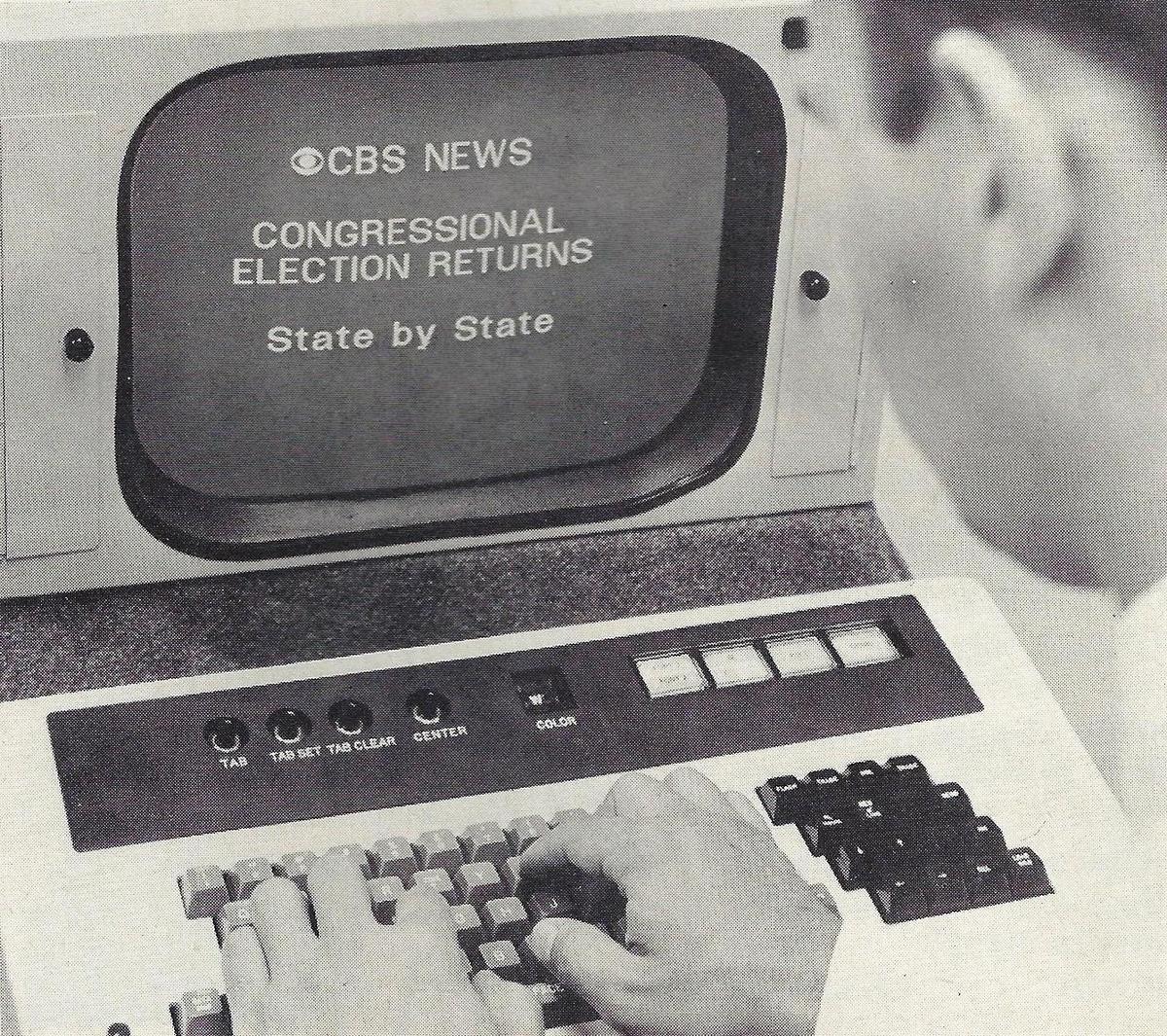
Baron recalled that the Vidifont was a major attention-getter when it was unveiled at the 1970 NAB Show.
“After the first morning, the reaction to the Vidifont by the attendees at the conference could be compared to the crowds awaiting the opening of the doors to a shopping mall on the day after Thanksgiving, and there was a constant stream of traffic to see this new innovation,” he wrote in his 2008 online essay, “First-Hand: Inventing the Vidifont: the first electronics graphics machine used in television production.”
Interestingly, it was through the acquisition of some third-party technology needed in development of the Vidifont that another ECG device (and company) would come into existence.
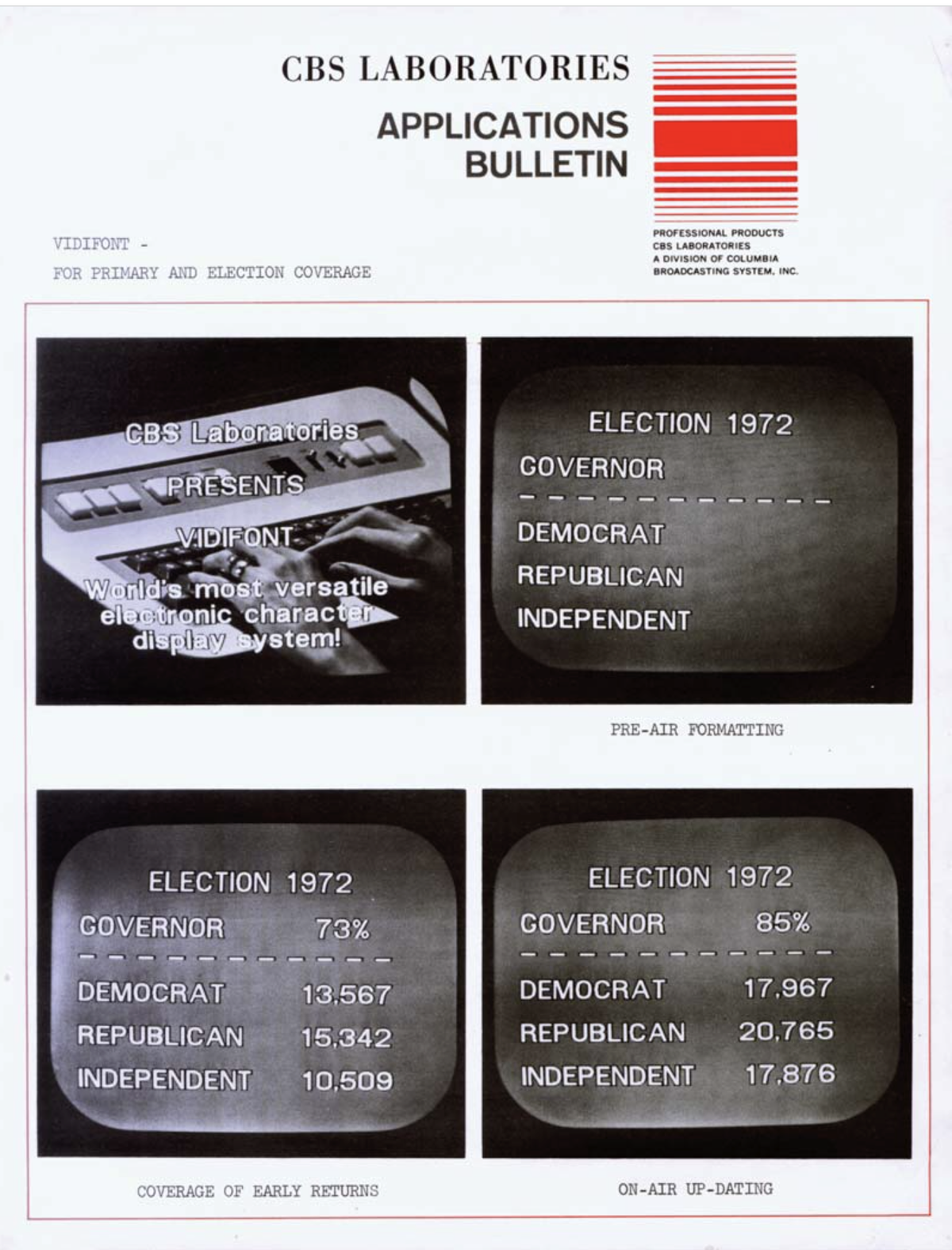
To facilitate the Vidifont’s off-line composition and editing of displays, a moderately-sized storage device was necessary. Rather than independently develop such a storage component, CBS Labs decided to utilize technology already created by a small Long Island-based company catering to the computer industry, the Systems Research Corp. or SRC. (This SRC linear-tape storage device—the “Vidiloop”—had already been incorporated into the Visual/AB Dick Videograph). It was through CBS’s interest in the Vidiloop that SRC learned of that company’s ECG project and continued to track developments.)
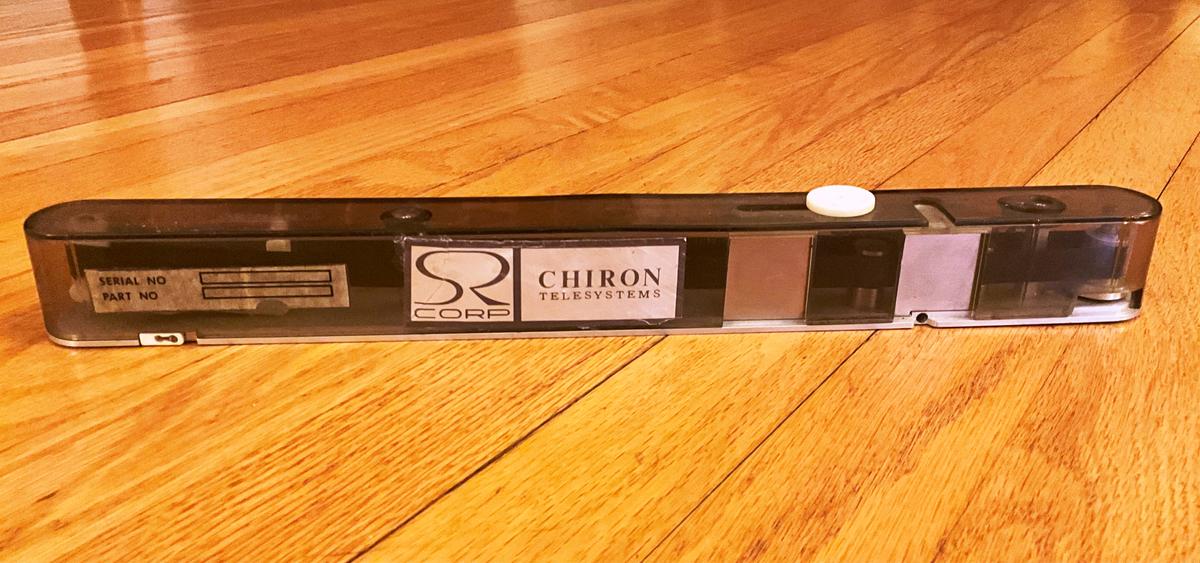
The successful 1970 NAB premiere of the Vidifont convinced SRC to strike out on their own, with that company showing its first “in-house” ECG product in 1971. (A separate SRC in-house unit designated “Chiron Telesystems” was created to develop and market the device, with the first product offered—the model 9901— still bearing the “Videograph” name. This would soon change, with “Videograph” being dropped in favor of “Chiron.”)
It’s All in the Name
More than 50 years out, the reason—or reasons—for SRC’s name choice of “Chiron” remains something of a mystery. In Greek mythology, “Chiron” was a Centaur known for his wisdom and medical knowledge, rather than the violence associated with other Centaurs. However, even that name was destined to change slightly in a few years.

Another unsolved mystery is that in 1971— the same year— the first “Chiron” ECG supposedly premiered, Broadcast Engineering’s NAB Show product preview for that year indicates that SRC was still marketing an “enhanced” AB Dick Videograph now equipped with an “effects module” for adding word-by-word coloring, edging, and other niceties. According to the BE article, this effects module “provides a total electronic tilting capability when used in conjunction with the Chiron Vidiloop Title Storage System,” (author’s emphasis). This would indicate that SRC had not yet developed its own complete ECG.
By 1971, CBS Labs was marketing its complete Vidifont system, which included the SRC “Vidiloop” storage device. (Curiously, the name “Vidiloop” does not appear to have been registered for trademark protection, and a search for a “Vidiloop” patent also came up empty.) Even more confusing are the initial Chiron ads, which refer to the ECG itself as “the Chiron Vidiloop.”
The Emergence of a Totally New ECG
During this 1971-1972 timeframe, SRC appears to have been focused on totally breaking away from the AB Dick design and striking out on its own. This is evident with the debut of the “Chiron II” (Vidiloop was dropped from the name) at the 1972 NAB Show.

This new SRC entry—designed by engineering genius Eugene Leonard (who would go on to develop virtual set technology)—was considered revolutionary, as font generation was now entirely software-based, rather than relying on character sets pre-programed in magnetic core plane memories. In addition to the “stock” fonts available from Chiron (SRC), the Chiron II could also generate character sets from any user-provided printed font, alphabet, or logo with the addition of a “font compose” module and input of the desired graphic element or elements provided by a video camera.
It also provided proportional spacing of letters (kerning), and incorporated a much faster system clock (36 MHz as opposed to the Vidifont’s 20 MHz) to provide the necessary leeway for creating more detailed characters and fine-tuning spaces between them. However, these niceties came at a cost—a $35K price tag (>$250K in today’s money) and support equipment, including a 16-bit minicomputer, that completely filled an equipment rack.
The “Chiron-to-Chyron” name change occurred sometime in 1975, with Broadcasting magazine listing “Chiron Telesystems” among NAB Show exhibitors that year, and a year later, it was “Chyron Corp.” (The company also changed addresses, relocating a relatively short distance on Long Island from its former Great Neck base of operations.)

Asked about the “i” to “y” switch in the spelling of the company name, Bill Hendler, Chryon’s now-retired CTO, explained that this was necessary when the operation decided to incorporate in 1975. “A search of names revealed that ‘Chiron’ was already taken,” Hendler said, recalling that his father had been part of the legal team handling the incorporation.
As the 1970s progressed, other companies developed and marketed ECGs for the broadcast television market—Telemation, 3M, and RCA, just to name a few—however, Chyron began to dominate the market, with additions of enhanced feature sets, a diminished amount of rack real estate, reduced complexity (microprocessor chips soon replaced the standalone Chiron II minicomputer) and lower acquisition costs.
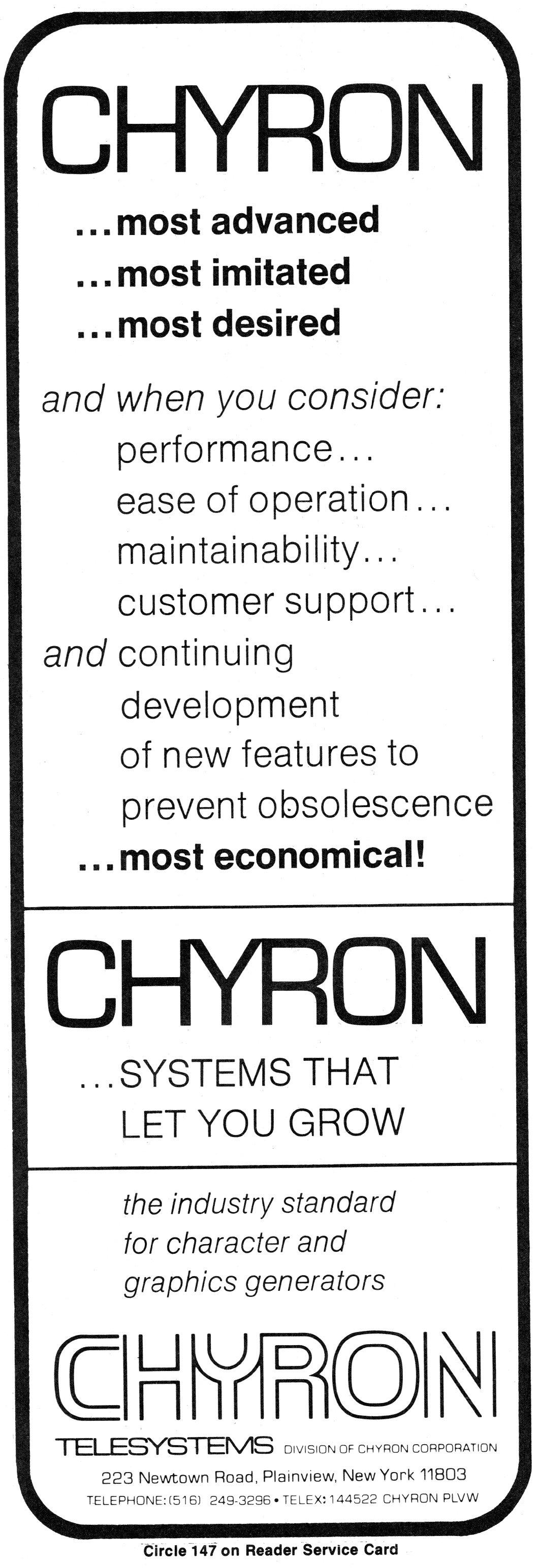
With the passage of time and continuing success of the product, the corporate name has eventually become generic. According to Merriam-Webster’s on-line dictionary, the term “Chyron” became synonymous with “lower-third” in 1990, the same year that “hoodie,” “big-box” and “left-click” entered the vernacular. “Chyron” is now a name that seems destined to endure long after those of “RCA,” CBS Laboratories,” and “Systems Research Corp.” have all been lost to history.
Acknowledgements: The author wishes to express thanks to Bill Hendler, Chyron’s former CTO, who provided much valuable information for this history, and also to Chuck Conrad and his staff at the Texas Broadcast Museum for providing scans of some of the early magazine ads reproduced.




